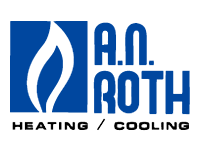Looking for a sustainable, renewable and cost-effective way to heat and cool your home? Hint: it’s right below your feet.
Looking for a sustainable, renewable and cost-effective way to heat and cool your home? Hint: it’s right below your feet.
Conventional heating and cooling is not the most sustainable or environmentally friendly concept as it uses non-renewable fuel sources like coal or fossil fuels. The answer to a better energy source is just under your feet: Geothermal Energy.
Still largely untapped in the HVAC market, geothermal energy is completely renewable, like wind or solar power, but it is more reliable. Geothermal energy can be used at any time and it is consistently the same. The reason for this is the temperature of the earth remains constant and temperate, unlike the outside temperature, which can range from burning hot summer to freezing cold winter. This is truly a greener solution to comfort.
Better yet, it is a system that you get rewarded for using. Currently through the end of 2022, the government is offering a 26% tax credit for geothermal energy installations. Read more about this under “Benefits” below.
How to get a Geothermal System
The key component of a geothermal system is an earth loop, which is a pipe system buried underground right at the point where the temperature is a consistent 50 to 55 degrees. The first step is to determine what kind of earth loop is best for your property. The three most common are vertical, horizontal or pond loops. The most common in the Louisville area are vertical due to the vast amount of limestone close to the surface. All loop types are equally effective if designed and installed properly.
Installing the geothermal system is the most expensive part of this process with the upfront costs of the earth loop. There is the cost of the system and the cost of drilling down into the earth to implement the earth loop, thus disrupting the landscape temporarily. Both of these are short-term issues as the landscaping can be repaired and the earth loop will pay dividends because once it is installed, it should last the life of the home.
Homes can be retrofitted to include a geothermal system or one can be installed in a newly-built home.
Benefits
Maintenance
These systems are known for being low maintenance. Routine maintenance is recommended and includes the same procedures that conventional systems require. The difference is instead of cleaning an outdoor unit, service technicians will check pressures on the earth loops and take temperatures.
Tax Credit Advantage
A 26% federal tax credit for residential ground source heat pump installations has been extended through December 31, 2022, so act quickly to save the most on your installation.
Long-Term Solution
Not only do earth loops last about a hundred years, geothermal equipment in general lasts much longer than conventional equipment, up to 25 years. Depending on your home’s fuel type and utility rates, most systems can pay for themselves in less than half their usable life.
Water Heating Included
Geothermal systems are not just for heating the air. They can also incorporate water heating, which allows for domestic water heating, radiant floor heating and sometimes even pool heating. This heating source is much more efficient than natural gas or propane.
Conclusion
The potential for geothermal energy is huge, especially since it can meet heating, cooling and electricity demands all while having a negligible carbon footprint. Right now, it is very underutilized, not because of its performance, but because of its upfront costs. Expect to pay a little more in the beginning for installation and equipment and then know that your costs will never be that high again. Consistency is the key with this renewable and reliable energy source.
To learn more about how A.N. Roth can bring geothermal to your home, call us at 502-584-8503 or CONTACT US through our website today. We look forward to hearing from you!


